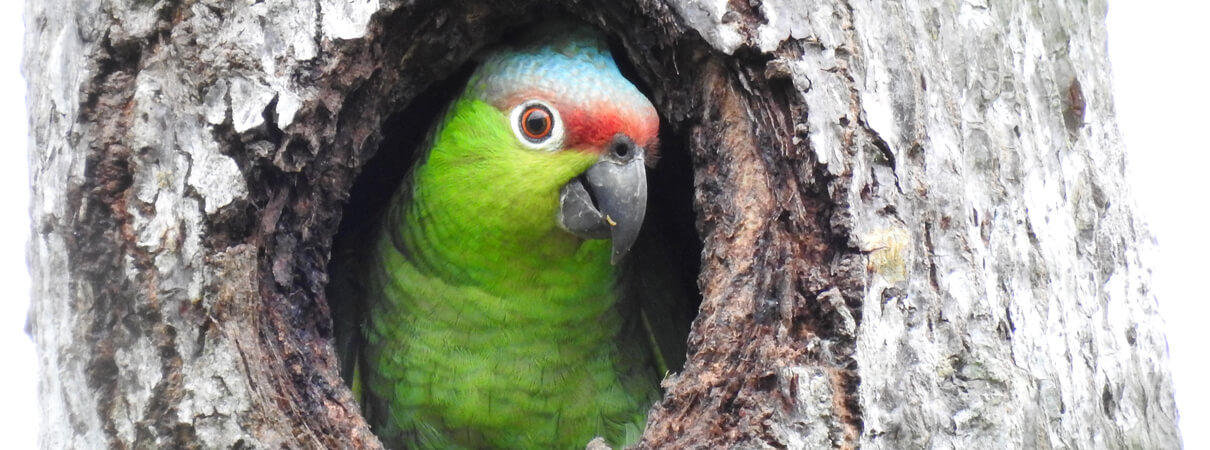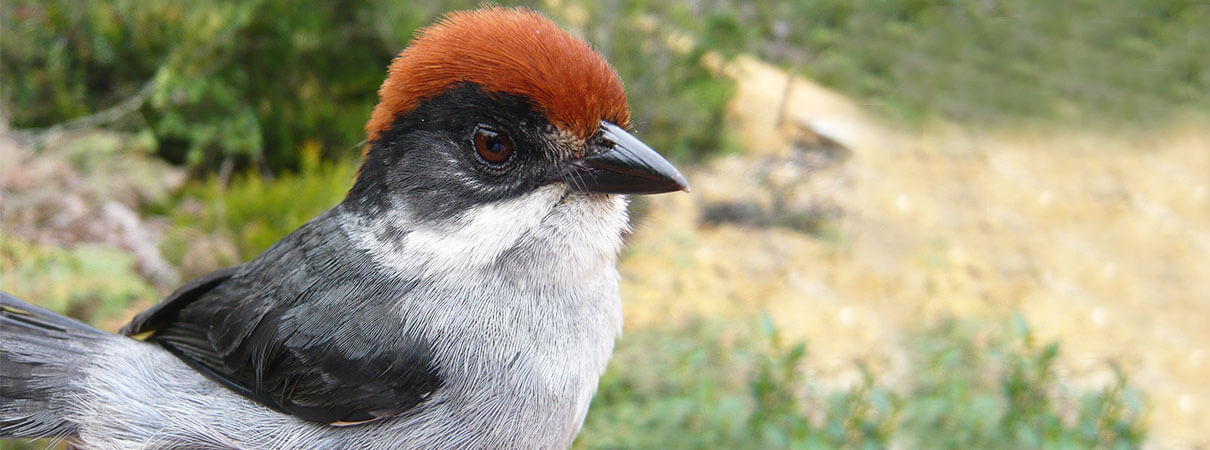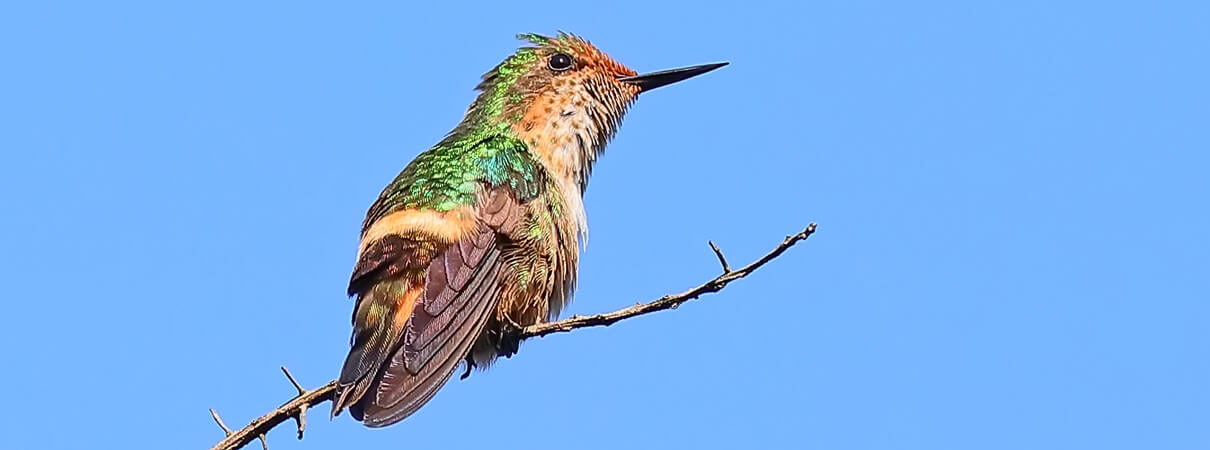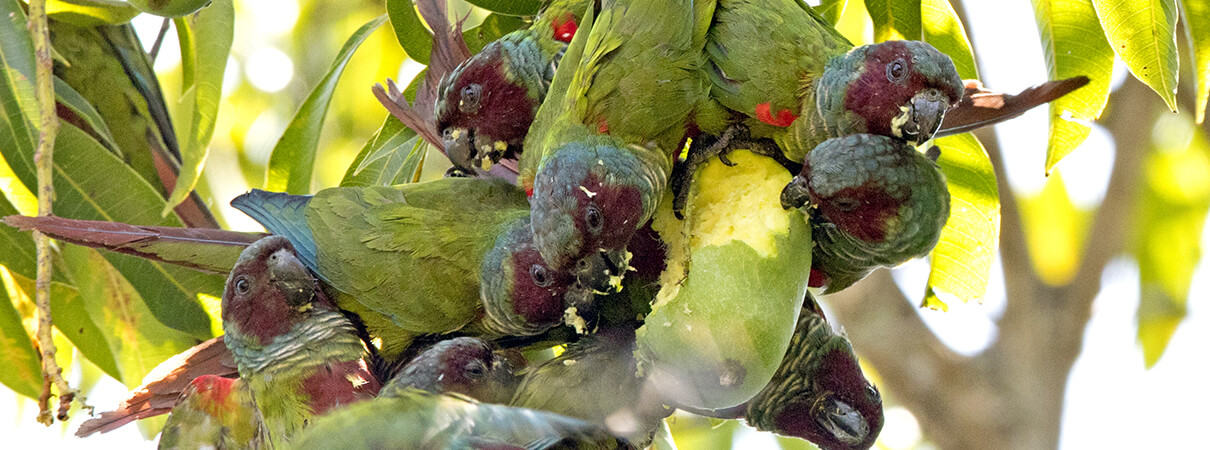Minding the Gap: Protecting the Rarest Unprotected Birds
Depending on whose taxonomy you use, there are close to 10,000 bird species on Earth. How can we hope to prevent species extinctions with so many birds and so many threats in today's world? At ABC we have broken the challenge down into a series of steps. The first begins with the IUCN Red List — which for birds is maintained by BirdLife International. The Red List uses the best available data and a sophisticated ranking system to determine which birds are most endangered worldwide. ABC works only in the Americas, so we subdivide the Red List, first to focus only on birds in our region, and then to prioritize the species in the highest threat categories — those listed as Endangered (EN) and Critically Endangered (CR). These are the birds most likely to go extinct first without conservation action. If we can safeguard these species, we stand a good chance of stemming the most imminent extinctions. While there's much more to do for birds overall — keeping common birds common, for example — once a species is lost, it is lost forever. So, for ABC, stopping these extinctions is a critical aspect of our mission.
ABC has been creating reserves for such species for nearly two decades (over 1 million acres of habitat so far protected), with a focus on EN and CR species found only at single sites (known as Alliance for Zero Extinction or AZE species), but we recognize that this alone, while critically important, is not enough to prevent all bird extinctions. For example, species found at a handful of highly threatened sites such as the Royal Cinclodes of southeastern Peru and Bolivia can be in more urgent need than birds that are found at only one site that is mostly protected, such as the Black-cheeked Ant-Tanager of Costa Rica.
To truly have a robust zero-extinction program we needed to identify the gaps in current protection for all the most endangered bird species, and to work to ensure that every one of these birds is covered by at least some effectively protected habitat, as a front line of defense against the most predictable imminent extinctions.
To really drill down on this issue, ABC assessed the ranges of all EN and CR species using Geographic Information System (GIS) software and overlaid them with the boundaries of existing protected areas to see which ones were well protected, which were partly protected, and which were not protected at all. This project is what we refer to as our “gap analysis.” It provides a road map to address the conservation needs of the most endangered birds that remain insufficiently protected.
What is ABC doing to close the gap? ABC is working with partners to create new protected areas for all endangered birds that are presently unprotected or insufficiently protected. Here are some examples.
Lilacine Amazon

Lilacine Amazon. Photo by Michael Moens
Endangered; population estimate 600-1,700; 5.2% habitat protected
Recently recognized as its own species, the Lilacine Amazon was split from the more widespread Red-lored Amazon. These large green parrots with dark bills and red foreheads live only in western Ecuador, where their total population is fragmented into six main core areas, the largest (400-500 birds) being found at the Las Balsas community. While the community protects mountain forests used by parrots for foraging under a national program called SocioBosque, the lowland dry forest used for roosting is imminently threatened by charcoal production and clearance for agriculture. ABC, Rainforest Trust, and Fundación Jocotoco are working together to protect 209 acres of key parrot roosting areas under a 99-year easement with the Las Balsas community.
Antioquia Brushfinch

Antioquia Brushfinch. Photo by Sergio Chaparro
Critically Endangered; population 50-100; 0% habitat protected
Re-discovered in 2018 by a keen-eyed conservationist on his way to mass, the Antioquia Brushfinch hangs on in small patches of native scrub dotting expansive dairy farms and cropland on the outskirts of Medellín, Colombia. ABC has been supporting and joining local researchers to search remaining habitat for brushfinches, and to identify areas suitable for protection. Although land is expensive in the area, ABC and multiple partners are working to identify the most suitable areas to protect. ABC is currently fundraising for this project. Meanwhile, silvipasture — a balanced use of trees, forage plants, and livestock — and other habitat enhancement techniques on working lands may also prove pivotal to increasing habitat for this species, and connecting currently isolated populations. Fortunately, silvipasture experts at the Colombian agricultural research organization CIPAV work in the area and are collaborating in this effort.
Short-crested Coquette

Short-crested Coquette. Photo by Greg Homel/Natural Elements Productions
Critically Endangered; population estimate 250-1,000; 0% habitat protected
Less than three inches long, males adorned with spiky orange crowns, the Short-crested Coquette is a tiny treasure only found at one site globally — the AZE site of Sierra de Atoyac in Guerrero, Mexico. ABC and its Mexican partner at the Universidad Autónoma de Guerrero have studied the species' ecology, reached out to local communities, and are working to develop a conservation action plan for the coquette. Thanks to these efforts, much more is known of the species' range and diet, and landowners better appreciate this endemic bird. Work has begun to establish a protected area on communal lands that preserves habitat for the species, through collaboration with local landowners and government officials.
Goiás Parakeet

Goiás Parakeet. Photo by Ciro Albano
Endangered; population estimate 20,000-25,000; <1% habitat protected
In a small zone of central Brazil, fast-flying flocks of Goiás Parakeets flash green, blue, and red as they head to and from fruiting and flowering trees. But this colorful vision could be fleeting if quick conservation action is not taken to save this species' fragmented and isolated dry forest habitat. The Goiás Parakeet occurs in Terra Ronca State Park, but habitat there is threatened by over-browsing goats. ABC has worked with the Federal University of Tocantins in the past to encourage the creation of private reserves in the area, and is supporting a project with a local researcher to evaluate the population and create an action plan to protect it.
Current ABC Priority Gap Species
The table below shows some of ABC's highest-priority target “gap” species — those in most need of conservation attention as of November 2019. Note that the Yellow-headed Brushfinch has slightly more than 10 percent of its range protected, but co-occurs with the Tolima Dove, meaning that ABC and partners can potentially protect habitat for two high-priority birds at the same time. As time goes on, ABC aims to ensure that this list changes, winnowing it down so fewer and fewer species sit on the verge of extinction.
| SPECIES | IUCN STATUS | POPULATION | RANGE | % PROTECTED |
| Tolima Dove | EN | 600 – 1,700 | W. Colombia | 6.5 |
| Goiás Parakeet | EN | 20,000 – 25,000 | Central Brazil | <1% |
| Lilacine Amazon | EN | 600-1,700 | SW. Ecuador | 5.2% |
| Gray-bellied Comet | EN | 250-1,000 | N. Peru | <1% |
| Blue-throated Hillstar | Recently Described | Unknown, likely <50 | Ecuador | 0 |
| Short-crested Coquette | CR | 250-1,000 | S. Mexico | 0 |
| Royal Cinclodes | CR | 50-250 | S. Peru | 7.8% |
| Antioquia Brushfinch | CR | 50-100 | Central Colombia | 0 |
| Yellow-headed Brushfinch | EN | 250-1,000 | W. Colombia | 13% |
Climate Resiliency
One common threat that ABC cannot ignore is climate change. While we cannot yet accurately predict the long-term outcomes of warming for each ecosystem we work in, it is already clear that reserves that include a greater cross-section of altitudinal habitats and those that allow migration of species along connected corridors are likely to be more biologically resilient than those that do not. ABC has already begun the process of planning how to implement climate resiliency strategies across the network of reserves we support — for example, by supporting expanded protection of lowland forest in the Ecuadorian Chocó region to complement higher elevation ridgeline forest at Canandé Reserve and other nearby protected areas.


















































